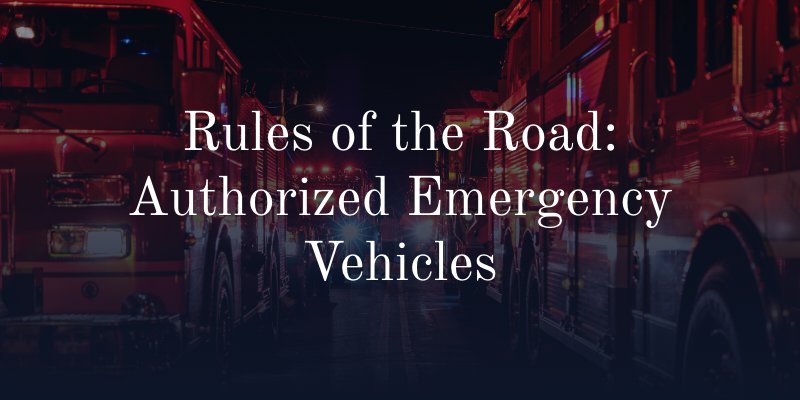Rules of the Road: Authorized Emergency Vehicles – by Brian C. Mickelsen, Esq.
Every so often, our law firm will get a call from a potential client or referring attorney about a case involving an “authorized emergency vehicle”. Typically, someone was injured or killed during a police pursuit or by an ambulance rushing another injured person to the hospital. Depending on the type of vehicle involved in the accident (government versus private), immunities and caps may be at play. For this blog’s purpose, let’s explore what is an “authorized emergency vehicle” and the rules that govern them.

What is an Authorized Emergency Vehicle?
South Carolina law defines what is an “authorized emergency vehicle” (See Section 56-5-170). Examples are fire department vehicles, police vehicles, ambulances (which are publicly owned), coroner vehicles, county vehicles, federal law enforcement or military vehicles, and so on. Since the vehicles referenced in this section are “public” vehicles, they will almost always be subject to the South Carolina Tort Claims Act. Section 56-5-760 governs the operation of authorized emergency vehicles.
Pay particular attention to the privileges and limitations afforded to these drivers. For example, the driver of an authorized emergency vehicle may proceed past a red or stop signal but only after slowing down as may be necessary for safe operation. The driver may also exceed the speed limit so long as he does not endanger life or property. However, the statute specifically provides that the privileges conferred by this statute do not relieve the operator from “the duty to drive with due regard for the safety of all persons.” The violation of this statute may constitute gross negligence and negligence per se.
The seminal case is Clark v. S.C. Dep’t of Pub. Safety, S.C. (2005). There, the plaintiff’s decedent was killed by a fleeing suspect during a high-speed pursuit by a trooper with the South Carolina Highway Patrol. The South Carolina Supreme Court held that (1) the applicable standard of care in initiating and failing to terminate a pursuit is gross negligence; (2) the supervision of a pursuit is a separate and independent duty than the operator’s duty to act reasonably; and (3) a law enforcement officer is not immune from liability under the basis of discretionary immunity for the decision of whether to begin or continue the police pursuit.
What Damages Can Plaintiffs Claim in South Carolina?
Under the South Carolina Tort Claims Act, plaintiffs are typically capped at $300,000 per occurrence. However, where there are independent and separate acts of negligence and no indication that such actions combined to form one single act of negligence, then those actions will be considered different occurrences. South Carolina courts have also allowed multiple caps where the separate negligent acts were committed by different employees of the same government entity.
In sum, first, determine whether your case involves an “authorized emergency vehicle”. If it does, look to the relevant statutes cited above, as well as the South Carolina Tort Claims Act for guidance. If you have questions about an injury claim, reach out to our Charleston personal injury lawyers for help.
